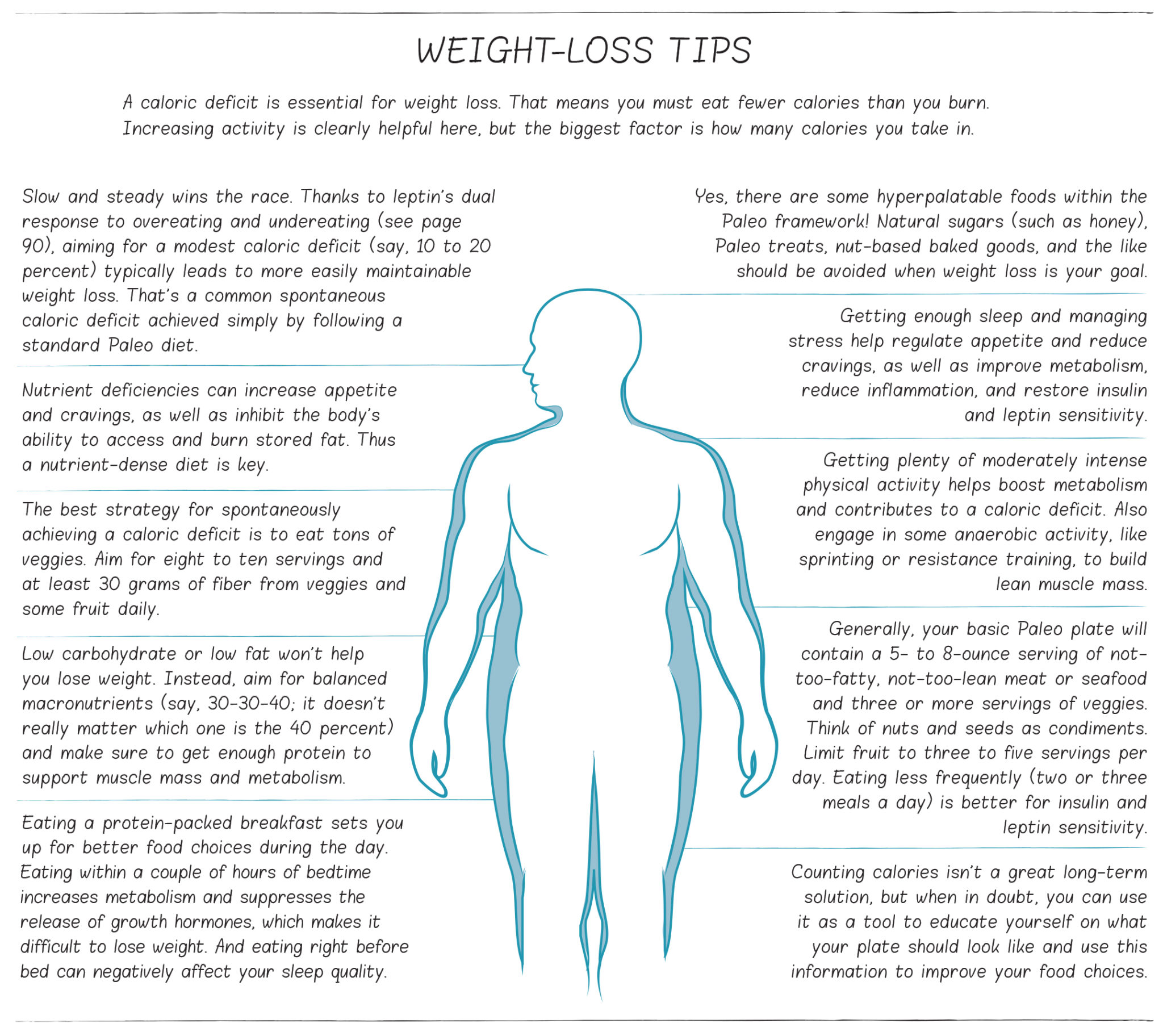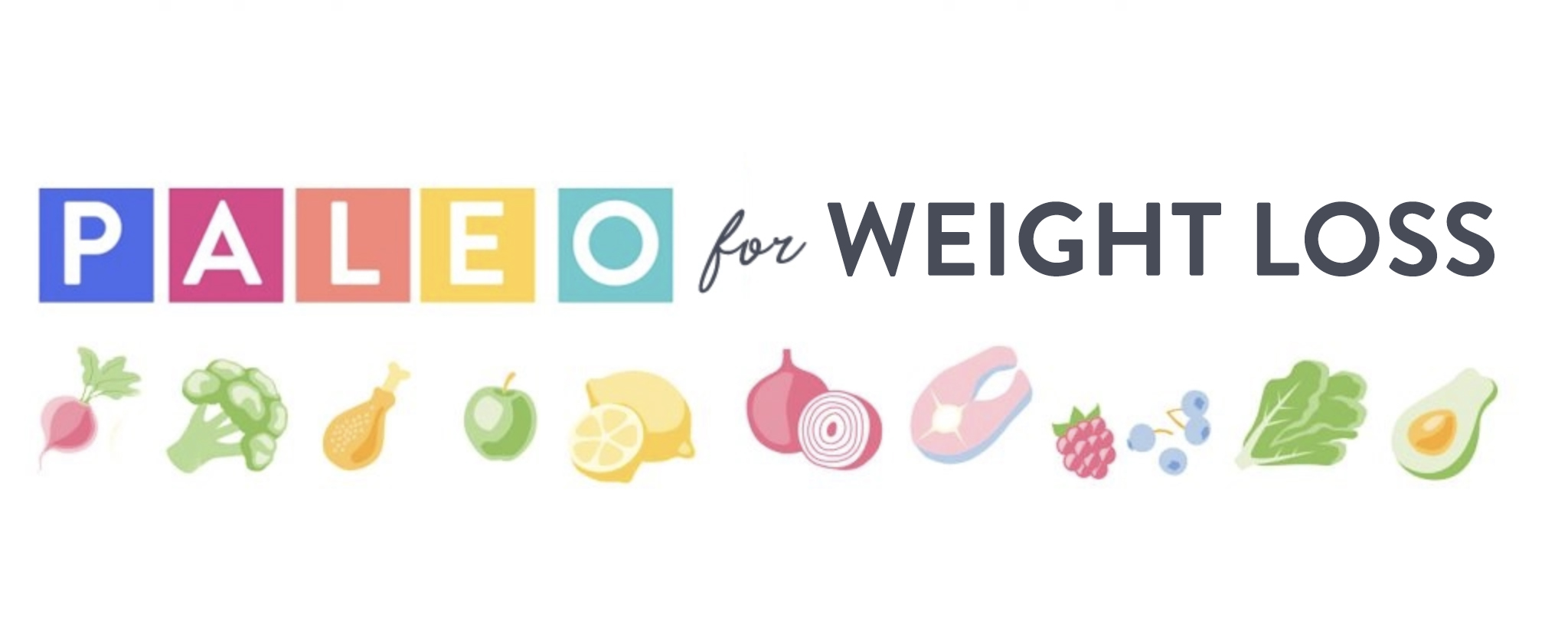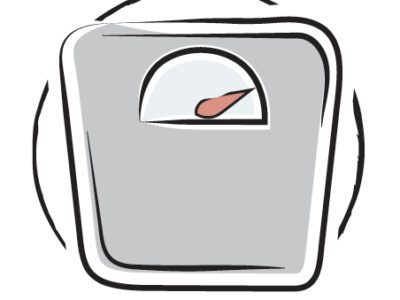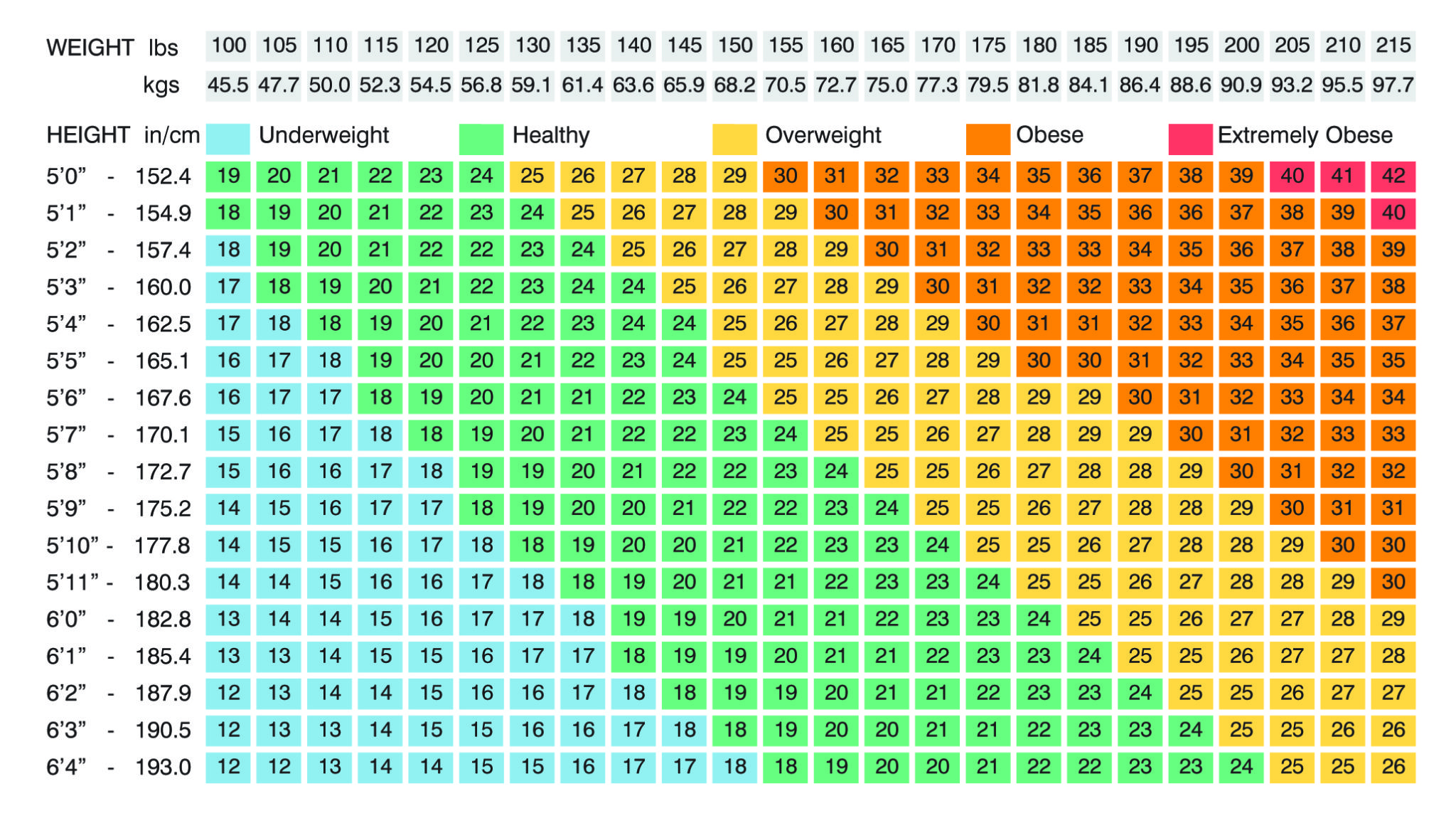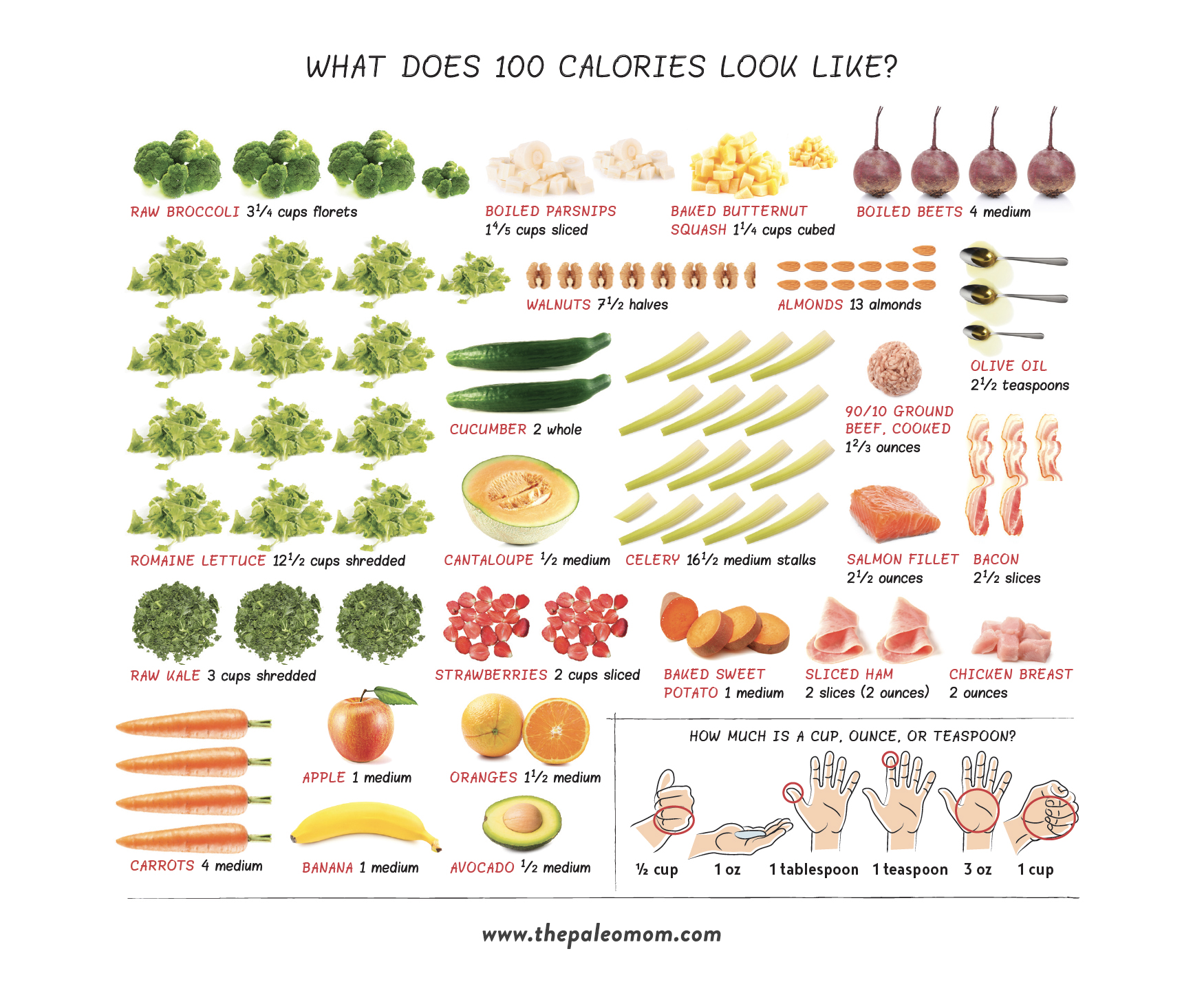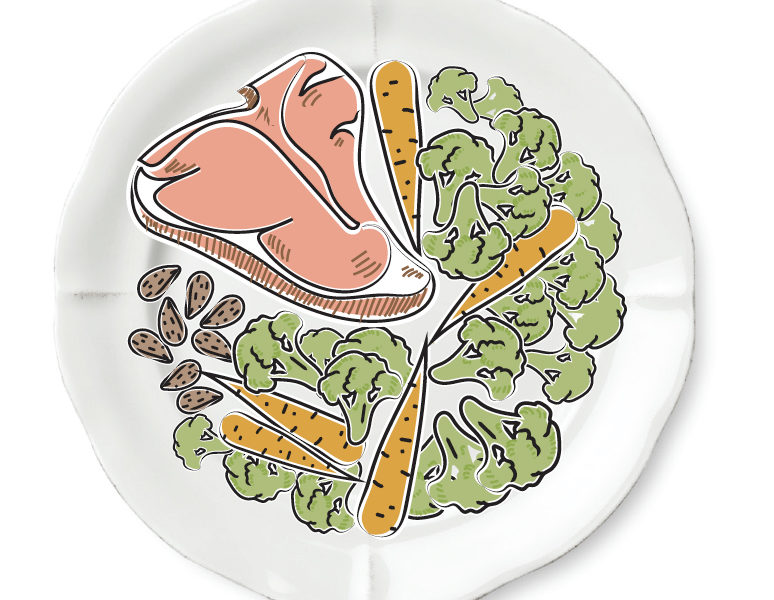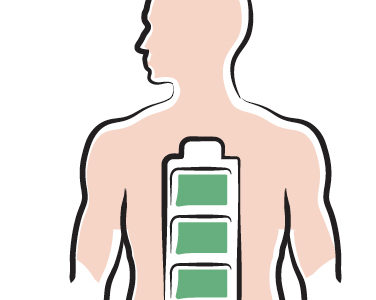An estimated 213 million Americans (69% of the population) are overweight with 111 million (36%) being obese. Because being overweight increases the risk of developing many other chronic health problems—including type 2 diabetes, heart disease, cancer, polycystic ovary syndrome (PCOS), infertility, pregnancy complications, gout, arthritis, erectile dysfunction, high blood pressure and high cholesterol—achieving a healthy weight is one of the most important things that we can do to improve our long-term health.
Studies show that the Paleo diet is effective for healthy weight loss with concurrent reductions in total fat mass, liver fat, belly fat, BMI, waist circumference, and hip-to-waist ratio. And this weight loss success occurs with study participants eating as much as they want! In fact, Paleo beats out government dietary guidelines, weight control diets, and diabetes diets in terms of weight loss. Studies also go a long way to explaining why: the Paleo diet provides higher satiety per energy per meal, meaning we feel fuller after consuming fewer calories. One study in men showed that participants reduced their caloric intake by about 400 calories per day without trying, and another study in postmenopausal women showed that participants reduced their caloric intake by 25%, also without trying! Multiple studies show that the Paleo diet reduces leptin levels, which might explain why Paleo meals are so filling, including showing that leptin reductions from Paleo are greater than those from following a Mediterranean diet.
See Paleo Diet Clinical Trials and Studies
Thanks to the Paleo diet’s focus on consuming nutrient-dense, satiating foods (along with removing many hunger-stimulating foods, like refined grains and sugars), many people lose weight when they first adopt the Paleo framework—even if they’re not trying! The elimination of Standard American Diet (SAD) staples, along with an increase in bulky plant foods that are high in fiber and water, generally results in a spontaneous decreased caloric intake and a subsequent reduction in body fat.
Smart Goal Setting for Weight Loss
I hear from many people who are frustrated that they can’t lose those last 10 pounds. But the scientific evidence suggests that throwing all of our effort into maximal leanness might not be the best idea. There might even be protective effects for people with a little more adipose [fat] tissue! So, smart goal setting becomes step 1 in any healthy weight loss journey.
This topic is discussed in detail in Healthy Weight Loss with Paleo, Part 4: Using the Obesity Paradox to Inform Our Goals. However, the take home message is that, when goal setting, it’s important to set goals related to body composition rather than an absolute weight on the scale.
While this is still a field of science in which new papers are released daily that add to our understanding, there seems to be strong evidence that aiming to have a body fat percentage in the higher end of the normal range is best of overall lifelong health.
You can calculate what that means for you using the following formula:
Body fat % = (1.39 x BMI) + (0.16 x age) – (10.34 x gender) – 9
with gender equal to 1 for men and 0 for women. Although, this still represents a best guess based on current evidence, calculate your lower body fat percentage target with a BMI of 22 and your upper limit with a BMI of 25.
For a 35-year old woman, this translates to a body fat percentage between 27% and 31%.
At-home scales that measure bioelectrical impedance aren’t quite as accurate as what professionals use, but a much better investment than a regular bathroom scale for daily or weekly monitoring. Remember that your weight and body composition aren’t the only metrics of health. And of course, the advice of your healthcare provider always trumps this type of information.
NEW! Healthy Weight Loss Online Course!
- Learn how to lose weight in a healthy way, so you can keep it off!
- 2 1/2 hours of video lecture + downloadable slide PDF
- Smart goal setting and measuring weight loss success
- Busting diet myths (the problems with keto, low-carb, low-fat, and low-calorie)
- Get healthy to lose weight (instead of losing weight to get healthy)
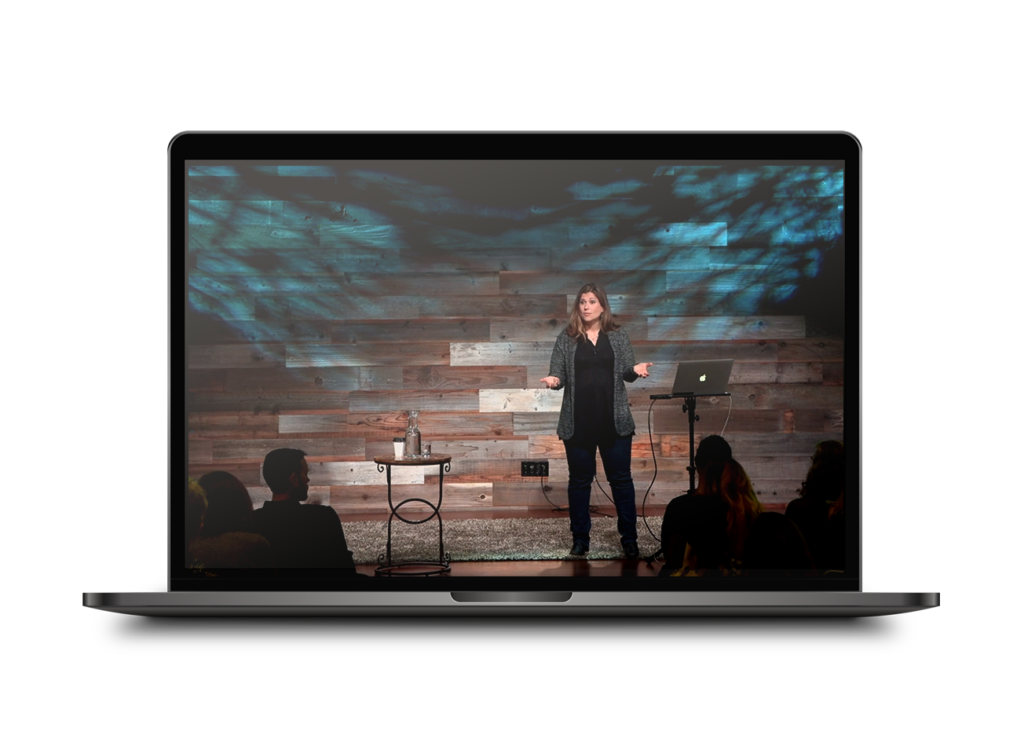
Learn More or Get Instant Access
The Weight Loss Magic Bullet: Portion Control
Portion control is the driving force behind every successful weight-loss diet, whether it be low-carb, Paleo, the Mediterranean diet, the DASH diet, Weight Watchers, or any number of short-lived fads. No matter what a diet’s official rationale is, it induces weight loss chiefly by reducing the number of calories consumed. Different diets go about this in different ways, but energy intake is what ultimately ends up changing the number on the scale. See Portion Control: The Weight Loss Magic Bullet
A large body of scientific literature confirms this concept. When calorie intake is held constant, different macronutrient ratios (such as low-carb/high-fat or high-carb/low-fat) don’t have significantly different effects on the amount of body fat lost (or on overall energy needs). There’s no substantial evidence to support that specific macronutrient ratios have a “metabolic advantage” when it comes to burning more fat or changing energy needs; the only thing that ends up influencing body mass is the calorie content of our diet. For example, a metabolic ward study from 1992 in which subjects were fed tightly controlled diets with equal calorie contents found no detectable difference in the amount of energy people burned when eating an extremely high-fat, low-carb diet (70% fat and 15% carbohydrate) versus an extremely low-fat, high-carb diet (0% fat and 85% carbohydrate). Another metabolic ward study found that when hypercaloric diets with different macronutrient ratios were compared, calories alone accounted for body fat gain.
That being said, some studies have found an advantage to eating more protein when it comes to preserving lean mass (muscle) or burning a higher proportion of body fat relative to other tissue. But those findings aren’t consistent across all studies and in some cases are gender-specific, with women having a greater advantage when it comes to lean mass preservation from high-protein diets. Ultimately, the research consistently shows that the most important component of weight loss is being in a negative energy balance (that is, consuming fewer calories than you burn).
Many people purport that there are benefits to manipulating macronutrient ratios (including low-fat, low-carb, and even ketogenic diets), claiming that doing so will bolster weight-loss efforts. But this claim isn’t supported by scientific research; in fact, studies attempting to confirm weight-loss improvements have actually debunked the concept. See New Scientific Study: Calories Matter
A Paleo diet rich in fibrous plant foods (dark leafy greens, cruciferous veggies, seaweeds, tubers, fermented vegetables, berries, and so on) along with highly satiating high-quality meat and seafood (including organ meat, grass-fed beef, pasture-raised pork and poultry, and wild-caught fish and shellfish) puts us at an advantage for reducing energy density and increasing satiety. This concept is supported by scientific studies pitting the Paleo diet against other diets for weight-loss effects. It’s been demonstrated that transitioning to a Paleo diet results in a spontaneous reduction in calories of about 400 per day—that’s almost a pound of weight loss per week, without any additional attention paid to weight-loss efforts! Furthermore, research has demonstrated that a Paleo diet improves the symptoms of metabolic syndrome, high blood lipids, and elevated fasting blood sugar, all of which may hinder weight-loss efforts due to the hormonal imbalances underlying these issues. See Healthy Weight Loss with Paleo, Part 1: Modifying Dietary Choices to Support Fat Metabolism
Generally, someone with weight to lose can expect to achieve a modest caloric deficit when adopting a Paleo diet—without feeling deprived, counting calories, or going hungry—as a result of replacing addictive empty calories with satiating, nutrient-dense whole foods.
Unfortunately, that doesn’t mean every overweight person following a Paleo diet will spontaneously achieve a caloric deficit and watch the pounds melt away. There are a few traps we can fall into that can stall or prevent weight loss:
- Tasty combinations of Paleo-friendly fat, carbohydrate, and salt encourage us to eat more than we might really need to. This includes Paleo breads and desserts, adaptations of SAD comfort foods, dehydrated foods, and chocolate. Even though the ingredients in these foods are acceptable components of a Paleo diet, when they’re mixed together in hyperpalatable combinations, they can stall weight loss or even contribute to weight (Just because the cookies are Paleo doesn’t mean it’s harmless to eat the entire batch at once!) Monitoring portion sizes with these foods can be helpful.
- A number of studies have shown that protein is the most satiating macronutrient, curbing appetite and potentially increasing thermogenesis, so making lean sources of animal protein (like seafood and grass-fed beef) the centerpiece of our meals may assist with weight loss.
- Low-moisture foods like nuts, dried fruits, and Paleo-friendly chips tend to be easier to overeat than foods with greater volume and water content. Watch out for mindless munching! Fully hydrated foods (fresh fruit versus dried, a sweet potato versus sweet potato chips or fries, and so on) tend to be more difficult to overeat.
- Adding veggies to any meal will lower the energy density of that meal and provide more fiber and bulk, helping us reduce our calorie intake without even thinking about it.
By focusing on portion control and understanding the traps that can lead us to eat more than we need, we have a good shot at spontaneously reducing our energy intake and losing weight without the hassle of counting calories, weighing food, or stressing about every bite that goes into our mouths.
Eat Your Veggies!
New research in the field of obesity is helping to explain the differences between normal-weight and overweight people. Successful weight loss is highly related to vegetable intake, which is no surprise. One difference is the way we approach vegetable (and fruit) intake. Overweight people are more likely to consume lots of vegetables and fruit when they have better planning—something we know is necessary when it comes to Paleo!—and inhibitory control (that is, the ability to resist hyperpalatable foods). And eating a veggie-rich diet improves our chances of maintaining weight loss. Choosing to incorporate more vegetables into our diet is one way to retrain our executive functioning, promote weight loss, and make it more sustainable in the long term. See The Importance of Vegetables
One of the most obvious reasons to eat vegetables is that they are relatively less calorically dense than other Paleo foods; this means we get more micronutrients and fewer calories from each bite. For example, 200 calories of a pure fat like ghee is just shy of 2 tablespoons, whereas 200 calories of kale is more than 6 cups!
Vegetables also supply plenty of fiber. This is important because a high fiber intake increases satiety by suppressing ghrelin, meaning that we feel more satisfied more quickly. This significantly reduces the likelihood of overeating. Plus, fiber is essential for a healthy gut microbiome, which is critical for optimal health (including weight loss and maintenance). Indeed, the gut microbiome has been found to be different in normal weight people than in overweight people. Fiber (or lack thereof) is a likely reason why the microbiomes are different. See The Fiber Manifesto, Part 1 of 5: What Is Fiber and Why Is it Good?
Phytochemicals are another compelling reason to eat tons of vegetables while pursuing weight loss. The process of liberating fat from adipocytes (fat storage cells) and then converting the stored fat to glucose creates oxidants. While the production of reactive oxygen species (ROS) is a normal consequence of our metabolism, if we are losing weight and metabolizing a relatively large amount of stored fat, we can create too many ROS, causing an imbalance between oxidants and our body’s ability to eliminate them using our natural antioxidant systems that may lead to cellular damage. This is one of the arguments against losing weight too quickly; it can increase our chances of some diseases, like cardiovascular disease, and may speed up cellular aging. However, eating phytochemicals helps to balance the equation. See The Amazing World of Plant Phytochemicals: Why a diet rich in veggies is so important! and Polyphenols: Magic Bullet or Health Hype?
Carbohydrate Confusion: Proceed Intelligently!
There are known setbacks to eating too many carbohydrates while trying to lose weight. Monitoring blood sugar regulation—knowing our levels of fasting blood glucose, fasting insulin, and HbA1C (a 3-month measure of how much glucose is stored in our red blood cells)—is essential. But even if your bloodwork is pristine, excess carbohydrate consumption can undermine weight-loss attempts. Here are the two main reasons to avoid a high-carb approach to weight loss:
- Excess carbohydrates become stored fat. When we do not maintain a caloric deficit, excess dietary carbohydrates are easily converted to fat (specifically triglycerides) and stored as fat in our cells. Eating too many carbs is like asking your body to store more energy for later—and it will happily comply!
- Systemic inflammation is elevated. Consuming too many carbohydrates, notably sugars, is a trigger for elevated systemic (or bodywide) inflammation. Sugar has been shown to increase the release of pro-inflammatory cytokines, immune system messengers that ramp up inflammation (see page 000). Systemic inflammation is associated with weight problems.
Conversely, low-carb eating is often touted as a tool for weight loss because it theoretically keeps insulin levels low, allowing for more stored fat to be released as fuel for the body (the insulin hypothesis of weight loss). But there is little to no scientific evidence supporting this theory, with the most recent data indicating that low-carb diets are simply a sneaky way to reduce calorie intake without actually counting calories. (Yes, that means portion control!) There are several reasons to avoid going too low-carb:
- Hypothyroidism: You may have heard the recommendation that we all need to eat enough carbs to support our thyroid gland and hormone production. It’s true—you can induce hypothyroidism (insufficient thyroid hormone). Eating enough carbohydrate, specifically having enough available glucose, is essential for the production of functional thyroid hormone. This is why adding carbs to a chronically low-carb diet might jump-start weight loss: the additional thyroid hormone stimulates metabolism! See page 000.
- Mood problems: Serotonin, the “happy neurotransmitter,” is produced largely in the gut, and this process depends on the presence of glucose. (That stereotypical low-carb crankiness is due in part to lower production of serotonin.) If you have a propensity toward depression or anxiety, cutting off your serotonin supply might not be the best idea! Science also says that long-term low-carb diets might be problematic for cognitive function, so things like work performance might be sacrificed.
- Insulin and hunger dysregulation: Contrary to popular belief, some people experience insulin dysregulation when they go too low-carb. A recent study of the participants on the popular TV show The Biggest Loser demonstrated that there are long-term metabolic consequences to severe carbohydrate restriction that increase hunger and decrease a person’s ability to lose weight.
- Gut health: Dietary carbohydrates feed our microbiome. When we don’t eat enough vegetables and fruit, we lose diversity in our gut bacteria. As previously discussed, this lack of diversity can have huge consequences for our health, including not just digestive upset but also issues with hormone regulation, like appetite, weight management, and hormone balance.
- Sleep: Because of the role that carbohydrates, including fiber, play in hormone balance, they are essential for healthy sleep. In fact, research has demonstrated that less sugar and more fiber is the best formula for deep sleep. Because Fiber Wasn’t Awesome Enough: New Science Suggests Fiber Improves Sleep Quality!
This is not to mention the importance of getting enough carbohydrates in certain states of being, like if you’re an athlete (athletes’ bodies need carbs to make glycogen and maximize athletic performance) or a pregnant woman (a growing fetus needs carbs for brain growth and other aspects of development). The notion that carbs are needed during pregnancy was corroborated by a recent study, which determined that a higher-carb diet is better for the metabolisms of pregnant women than a low-carb, high-fat diet.
So how many grams of carbohydrates should we aim for? Provided that your carbohydrates are coming from whole fruits and vegetables, the 100- to 200-gram range is probably adequate from a fiber standpoint. Of course, emulating a hunter-gatherer fiber intake would be incredibly challenging without total carb intake creeping up toward 300 grams or more. When it comes to weight loss, we need to eat enough carbs to maintain health and support our metabolism. Planning to stay between 100 and 200 grams of total carbohydrates per day is a good “middle of the road” plan. For more details, see How many carbs should you eat?
Eating tons of veggies is key to losing weight and keeping it off, while supporting health in other ways. Instead of worrying about grams of carbohydrates, aim for one serving of a starchy root or tuber, like sweet potatoes, beets, or parsnips, with each meal in addition to two or more servings of nonstarchy veggies, like lettuce, broccoli, kale, cabbage, or celery.
NEW! Healthy Weight Loss Online Course!
- Learn how to lose weight in a healthy way, so you can keep it off!
- 2 1/2 hours of video lecture + downloadable slide PDF
- Smart goal setting and measuring weight loss success
- Busting diet myths (the problems with keto, low-carb, low-fat, and low-calorie)
- Get healthy to lose weight (instead of losing weight to get healthy)

Learn More or Get Instant Access
Nutrients to Metabolize Stored Energy
Just to be clear: there are no “magic bullet” nutrients (or foods, for that matter!) that will turn us into fat-burning machines. However, certain nutrients play important roles in mobilizing and metabolizing stored fat, and being deficient in any one of them could stand in the way of weight loss.
We all have energy stored in the form of fat in adipose tissue (fat cells) throughout our bodies and in the form of glycogen in our muscles and livers. When we lose weight, we want to lose weight in the form of fat (rather than just lose water from depleting glycogen stores—a common side effect of crash diets and low-carb/ketogenic diets). From a biochemical perspective, the fat molecules must be liberated from storage so that they can be converted to cellular energy, or adenosine triphosphate (ATP), in the energy-production organelles called mitochondria—this is called lipid metabolism. This process includes help from assorted micronutrients, which act as cofactors (meaning their presence is necessary for a biological activity to take place) for the various enzymes involved in pyruvate oxidation and the Krebs cycle or as antioxidants. In fact, micronutrient sufficiency (especially of the micronutrients below) is necessary to “burn” fat, regardless of how many calories we consume.
The following nutrients act as key players in this process.
- Vitamin A
- Vitamin B1
- Vitamin B3
- Vitamin B5
- Vitamin B6
- Biotin
- CoQ10
- Iron
- L-Carnitine
- Creatine
- Vitamin D
To learn more about the role of these nutrients in lipid metabolism, see 10 Nutrients that Can Help You Burn Fat.
These nutrients are just a sample of the incredible breadth of micronutrients that our bodies use to go through the vast number of chemical reactions that allow us to function every minute of every day. While nutrient density is a fantastic goal within a Paleo template, we know that focusing on these particular micronutrients will make it easier for us to burn fat. See The Importance of Nutrient Density
Lifestyle Adjustments for Weight Loss
While regular exercise is a fantastic tool for ensuring that we achieve a caloric deficit, research has demonstrated that exercise alone is not enough to induce spontaneous weight loss. So, while exercise contributes to weight loss, we can’t spend endless hours at the gym without also altering other behaviors. See Healthy Weight Loss with Paleo, Part 2: Lifestyle Choices That Make a Difference
However, it’s almost impossible to discuss exercise as a whole without addressing the different types of exercise individually. We know that the two different types of exercise (aerobic and anaerobic) have different effects on the body, and they have been studied separately in the scientific literature. Let’s discuss how each type contributes to weight loss.
Aerobic exercise is essentially the scientific way of saying “cardio.” From a scientific perspective, aerobic exercise involves cellular metabolism that utilizes oxygen. Really, this is “normal” human metabolism: aerobic exercise is just higher-intensity activity, so it involves the utilization of the stored glucose (as glycogen) in our muscles, and that is the enhanced caloric burn that we experience with this type of exercise. In a workout scenario, this translates to low to moderate activity that elevates heart rate and respiration rate and (almost always) involves sweating. Notably, extended periods of aerobic exercise utilize our available glycogen stores and promote the release of stored fatty acids. However, overexertion in the aerobic exercise realm can lead to muscular atrophy, so aim to keep this type of exercise to less than an hour per day.
Apart from the obvious caloric-deficit aspect, there are other benefits to engaging in this type of exercise. Countless studies have demonstrated the metabolic benefits of aerobic activity specifically during weight-loss efforts, including increased insulin sensitivity and improved liver function. Why does this matter for weight loss? Because insulin acts on fat cells, it’s critical for someone attempting to lose weight to be as insulin sensitive as possible. Aerobic exercise improves the functionality of fat cells and the liver, so we know that the fat being released from storage is going to be properly processed and used as energy.
Anaerobic exercise is the other main type of exercise. Anaerobic means that cellular metabolism is taking place without oxygen. Like aerobic metabolism, anaerobic cellular metabolism is totally normal; it is just used by different tissues and under specific conditions. In particular, fast-twitch muscle, which is used for sprinting and resistance training, utilizes this type of metabolism. Why? It allows for faster movements and provides energy more quickly. The downside is that the by-product, lactic acid, is created by anaerobic metabolism and can build up in tissues (this is what causes the classic “burn” that we experience during intense exercise). Because anaerobic metabolism is a limited system, the limit of true anaerobic activity is only about 4 minutes. And because anaerobic metabolism does not utilize glucose in the same way that aerobic metabolism does, we don’t understand how this type of activity specifically contributes to calories burned.
Still, there are compelling reasons to engage in high-intensity, anaerobic activity. Specific to weight loss, we see an increase in the release of stored fat immediately after anaerobic exercise. Plus, resistance training increases lean muscle mass. Relative to fat cells, muscle cells burn much more energy, so when we gain muscle mass, our metabolic rate goes up, even if we haven’t lost any fat. For that reason alone, adding weight training focused on building muscle is essential for long-term weight-loss success and especially maintenance.
Although we typically think of weight loss as a matter of diet and exercise, a number of other lifestyle components can stand in the way of releasing excess weight.
Sleep is critical for keeping hormones in balance. Through changes in hormone signaling throughout the body (both our sensitivity to those signals and the amounts of hormones we produce), a lack of sleep alters our food preferences toward more energy-dense, hyperpalatable foods, as well as increases hunger, decreases fat metabolism, and increases the stress response, which affects basal metabolic rate. See The Link Between Sleep and Your Weight
Inadequate sleep has profound effects on hunger hormones and metabolism—upregulating ghrelin (making us hungrier) and downregulating insulin and leptin (making us insulin resistant), which makes us more prone to hormonal resistance (such as insulin resistance, leptin resistance, and cortisol resistance, in which the body is less responsive to the actions of those hormones) that can easily complicate, delay, or even prevent weight loss. In studies, when food intake is measured following sleep deprivation, people tend to eat substantially (20%!) more than normal.
It’s also critical to manage stress in order to lose weight. The net effect of cortisol is catabolic, meaning that it prepares the body for action without giving it an opportunity to rebuild. Plus, because cortisol increases blood glucose levels, chronically high cortisol can lead to increased storage of fat and makes it very difficult for us to use the fat we already have.
NEW! Healthy Weight Loss Online Course!
- Learn how to lose weight in a healthy way, so you can keep it off!
- 2 1/2 hours of video lecture + downloadable slide PDF
- Smart goal setting and measuring weight loss success
- Busting diet myths (the problems with keto, low-carb, low-fat, and low-calorie)
- Get healthy to lose weight (instead of losing weight to get healthy)

Learn More or Get Instant Access
Troubleshooting Weight Loss
The Paleo diet and lifestyle are very powerful tools for sustained healthy weight loss. If you aren’t seeing the results you’re expecting, there are a variety of potential underlying causes for this that are worthy of investigation. for more information, see Healthy Weight Loss with Paleo, Part 3: Troubleshooting Weight Loss Difficulties and 3 (Surprising) Things That Might Be Stalling Your Weight Loss.
